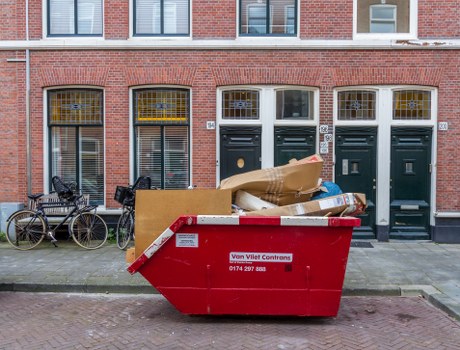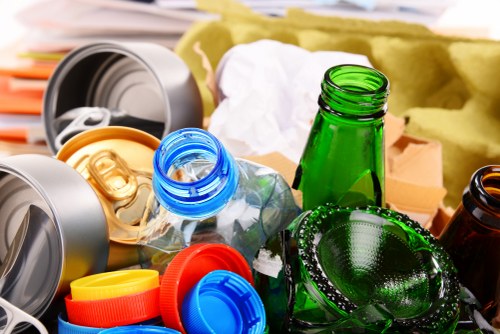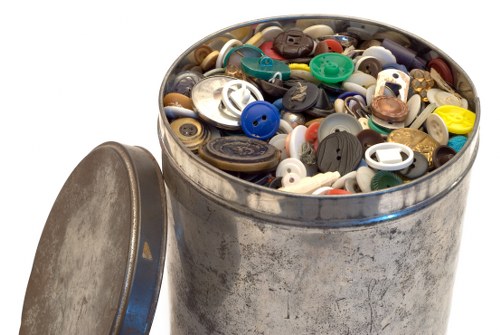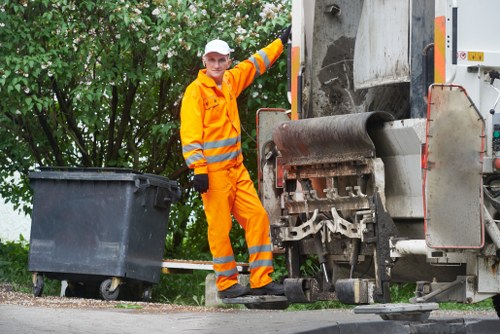Litter Clearance in Commercial Waste Disposal
Introduction to Litter Clearance

Litter clearance is a critical aspect of commercial waste disposal, ensuring that businesses maintain a clean and professional environment. Effective litter management not only enhances the aesthetic appeal of a commercial property but also promotes sustainability and compliance with environmental regulations.
In today’s fast-paced business world, managing waste efficiently is paramount. Companies are increasingly recognizing the importance of responsible waste disposal practices, including comprehensive litter clearance strategies.
This article delves into the intricacies of litter clearance in the commercial sector, highlighting best practices, benefits, and the role it plays in sustainable waste management.
Why Litter Clearance Matters

Maintaining a litter-free environment is essential for several reasons. Firstly, it projects a positive image of the business, fostering trust and reliability among clients and customers. A clean workspace also contributes to employee morale and productivity, creating a more pleasant and efficient working environment.
Moreover, effective litter clearance plays a significant role in environmental conservation. By properly managing waste, businesses can reduce their ecological footprint, contributing to broader sustainability goals and adhering to regulatory requirements.
Neglecting litter clearance can lead to various issues, including health hazards, pest infestations, and potential legal ramifications. Therefore, implementing robust waste management practices is indispensable for any commercial entity.
Key Components of Effective Litter Clearance

Successful litter clearance in commercial settings involves several key components:
- Regular Collection: Scheduled waste collection ensures that litter does not accumulate, maintaining a consistent level of cleanliness.
- Proper Segregation: Separating waste types facilitates recycling and reduces the burden on landfills.
- Employee Engagement: Educating and involving staff in waste management practices fosters a culture of responsibility and sustainability.
Implementing these components requires a strategic approach, tailored to the specific needs of the business and the nature of its operations.
Technologies Enhancing Litter Clearance

Advancements in technology have revolutionized litter clearance processes in the commercial sector. Automated waste collection systems, smart bins with sensors, and data analytics platforms enable businesses to monitor waste levels in real-time, optimizing collection routes and schedules.
These technologies not only enhance efficiency but also contribute to cost savings by reducing unnecessary collections and minimizing waste overflow. Additionally, data insights can inform sustainable practices, such as identifying recyclable materials and minimizing non-essential packaging.
Embracing technological innovations is essential for modern waste management, providing businesses with the tools needed to achieve their environmental and operational objectives.
Benefits of Professional Litter Clearance Services

Engaging professional litter clearance services offers numerous advantages for commercial establishments:
- Expertise and Efficiency: Trained professionals ensure thorough and timely waste removal, adhering to industry best practices.
- Compliance Assurance: Service providers are well-versed in environmental regulations, helping businesses avoid legal penalties.
- Customized Solutions: Tailored waste management plans cater to the unique needs of each business, enhancing overall effectiveness.
By partnering with experts, businesses can focus on their core operations while ensuring their waste disposal is handled responsibly and efficiently.
Implementing a Litter Clearance Strategy
Developing a comprehensive litter clearance strategy involves several steps:
- Assessment: Evaluate current waste management practices to identify areas for improvement.
- Planning: Develop a detailed plan outlining objectives, responsibilities, and resources needed for effective litter clearance.
- Execution: Implement the strategy, ensuring all stakeholders are informed and engaged.
- Monitoring: Continuously track progress and make adjustments as necessary to maintain optimal waste management.
Integrating these steps ensures that litter clearance efforts are systematic, sustainable, and aligned with the business’s operational goals.
Challenges in Commercial Waste Disposal
Despite its importance, litter clearance in the commercial sector faces several challenges:
- Volume of Waste: High volumes of waste can overwhelm existing disposal systems, necessitating scalable solutions.
- Recycling Limitations: Not all materials are recyclable, complicating efforts to reduce landfill contributions.
- Employee Compliance: Ensuring that all staff adhere to waste management protocols requires continuous effort and training.
Addressing these challenges requires innovative approaches, robust infrastructure, and ongoing commitment to sustainability.
Sustainability and Litter Clearance
Sustainability is at the forefront of modern waste management practices. Effective litter clearance contributes to broader environmental goals by reducing waste, conserving resources, and minimizing pollution.
Businesses can enhance their sustainability efforts by adopting eco-friendly waste disposal methods, such as composting organic waste, utilizing biodegradable materials, and investing in renewable energy sources for waste processing.
Moreover, promoting sustainability through litter clearance not only benefits the environment but also bolsters the company’s reputation, attracting environmentally conscious consumers and partners.
Regulatory Compliance in Waste Management
Compliance with local and national waste management regulations is crucial for any commercial entity. These regulations govern various aspects of litter clearance, including waste segregation, disposal methods, and reporting requirements.
Non-compliance can result in significant penalties, tarnishing the business’s reputation and financial standing. Therefore, staying informed about regulatory changes and ensuring adherence is essential for sustainable waste management.
Partnering with professional waste disposal services can aid businesses in navigating the complexities of regulatory compliance, providing expertise and resources to meet legal obligations effectively.
Cost-Effective Waste Management Solutions
Implementing cost-effective litter clearance strategies can lead to substantial savings for businesses. Efficient waste management reduces disposal costs, minimizes resource consumption, and lowers the risk of fines associated with non-compliance.
Investing in recycling programs and energy-efficient waste processing technologies can further enhance cost savings, contributing to the business’s bottom line while fostering environmental responsibility.
Assessing current waste management practices and identifying areas for optimization is key to achieving cost-effective and sustainable litter clearance.
Employee Training and Awareness
Employees play a pivotal role in maintaining effective litter clearance practices. Training programs educate staff on proper waste segregation, disposal protocols, and the importance of sustainability.
Raising awareness about the environmental impact of litter contributes to a culture of responsibility and accountability, encouraging employees to actively participate in waste management efforts.
Regular training sessions and informational campaigns can reinforce best practices, ensuring that litter clearance remains a priority across all levels of the organization.
Innovative Practices in Litter Clearance
Innovation drives the evolution of litter clearance methods in commercial waste disposal. Practices such as zero-waste initiatives, circular economy models, and the utilization of smart technology enhance the effectiveness and sustainability of waste management.
Adopting innovative practices not only improves operational efficiency but also positions businesses as leaders in environmental stewardship, appealing to a growing base of eco-conscious consumers.
Continuous exploration and adoption of new waste management strategies are essential for maintaining high standards of litter clearance in the commercial sector.
Case Studies: Successful Litter Clearance Programs
Examining successful litter clearance programs provides valuable insights into effective waste management strategies. For instance, Company A implemented a comprehensive recycling program, resulting in a 30% reduction in landfill waste within the first year.
Similarly, Company B adopted smart waste bins with real-time monitoring, optimizing collection schedules and reducing operational costs by 20%. These case studies demonstrate the tangible benefits of strategic litter clearance initiatives.
Learning from these examples can guide other businesses in developing and refining their own waste management practices.
Future Trends in Commercial Waste Disposal
The future of litter clearance in commercial waste disposal is poised for significant advancements. Trends such as increased automation, greater emphasis on sustainability, and the integration of artificial intelligence are set to transform waste management practices.
These trends promise enhanced efficiency, reduced environmental impact, and improved compliance, positioning businesses to meet the evolving demands of the market and regulatory landscape.
Staying abreast of these developments is crucial for businesses aiming to maintain effective and forward-thinking waste management strategies.
Conclusion
Effective litter clearance is an integral component of commercial waste disposal, contributing to a cleaner environment, regulatory compliance, and operational efficiency. By implementing strategic waste management practices, leveraging technology, and fostering a culture of sustainability, businesses can achieve significant benefits.
Investing in professional litter clearance services and staying informed about industry trends ensures that waste management efforts are both effective and sustainable.
Contact us today to learn how we can help your business implement a robust litter clearance strategy tailored to your needs.